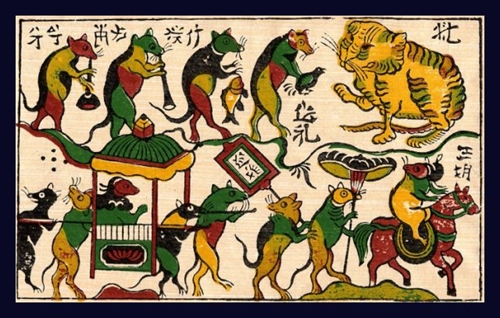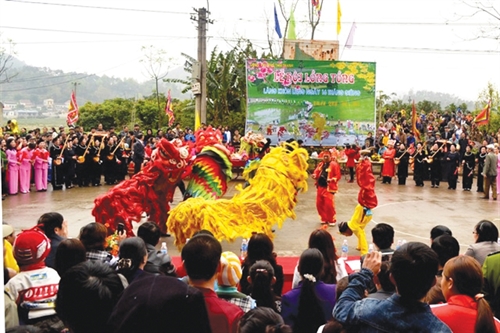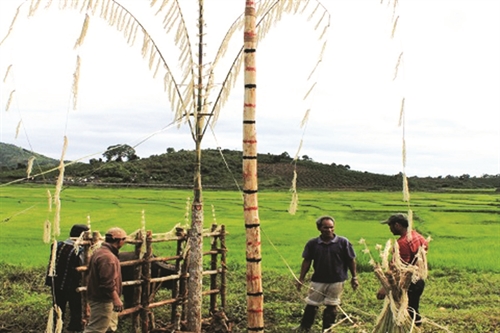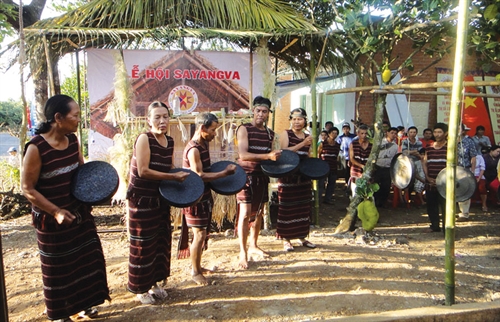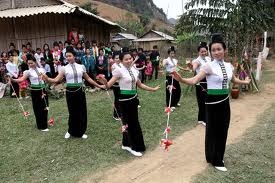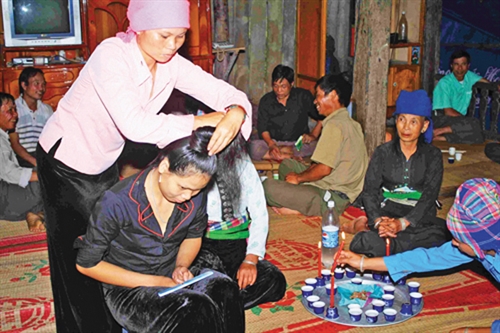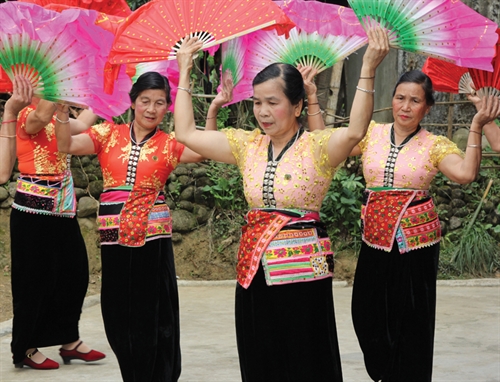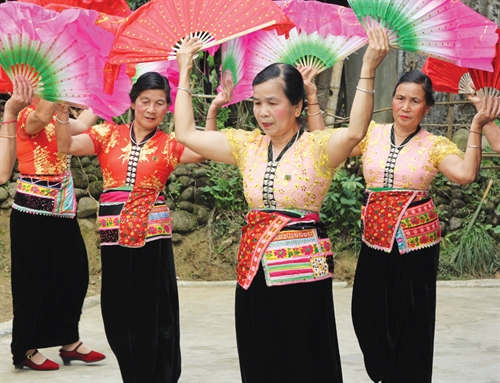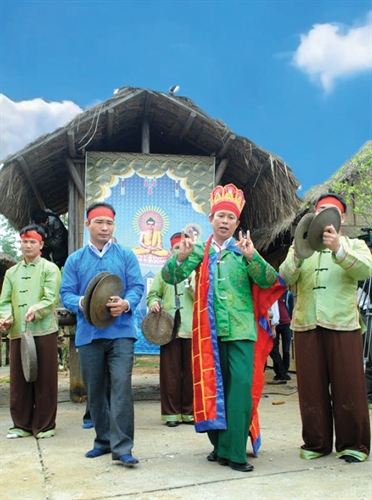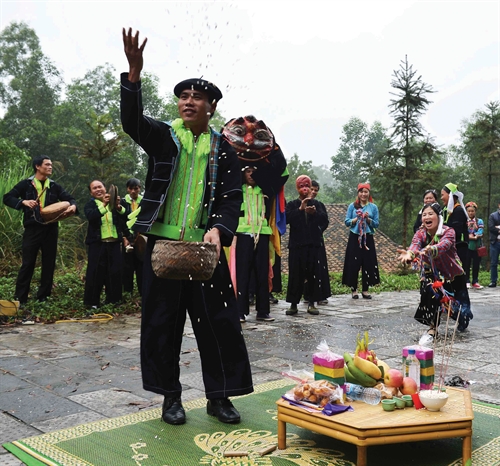Vieng market, a spring festival deeply imbued with folk beliefs and culture of northern delta inhabitants, opens annually at midnight of the 7th till dawn of the 8th of the first lunar month in Nam Dinh northern province.
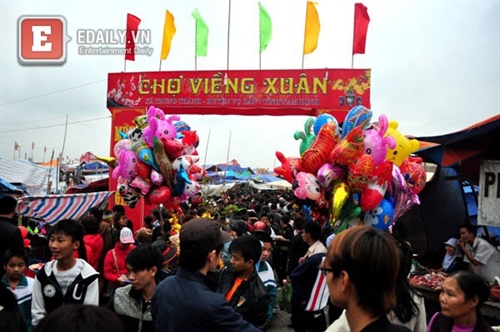 |
| Vieng market is a spiritual and cultural activity of Red river delta inhabitants__Photo: Edaily.vn |
Sellers and buyers at this unique market deal in a special commodity which is luck, selling bad luck and buying good luck for the new year.
The market, typical to an agricultural countryside rich in natural specialties, is an open-air fair displaying a wide variety of goods, from local farm produce, especially specialty crops and ornamental plants, to sophisticated craft articles, ranging from daily utensils, bronze and steel tools, worship articles, antiques and imitation antiques, to jewelry and toys.
Market goers believe they will enjoy a new year full of luck and prosperity if they can buy or sell goods as early as possible, making the market a spiritual rather than commercial event. Every year, tens of thousands of people from across the northern part of the country flock to this market, trying to sell or buy an item right at midnight of the 7th day without considering much about prices.
The opening of Vieng (which means heaven in Chinese-transcribed Vietnamese) market from midnight to dawn was originated from the popular belief that it was the time of heaven-earth exchange and positive-negative harmony when men and gods could meet and all prayers could be heard clearly.
The 8th of the first lunar month was regarded as the first day of a new farming cycle by northern delta inhabitants who closed their lunar new year festival on the 7th with a ceremony called ha cay neu (lowering the new year tree, which was a bamboo pole 5-6 m long set up in the courtyard of every family with its top decorated with such objects as good luck charms, origami fish and cactus branches).
The 8th was also regarded as the day of rice on which if the weather was fine, the whole year was believed to yield bumper crops. As rice was considered as valuable as gold (vang in Vietnamese), the market was also called Vang market. Locals then called Vang into Vieng for fear of profaning the name of goddess Van Cat, who symbolized economic and cultural prosperity of the ancient agricultural economy and who was conferred the title of princess Ma Vang by the king.
In Nam Dinh, three Vieng markets open only once every year on the 8th in three different areas.
Vieng market at Day temple in Vu Ban district, 16 km from Nam Dinh city, is linked with the worship of goddess Lieu Hanh, who was believed to support sincere and good-hearted prayers. Early every lunar new year, pilgrims flock to Day temple to pay tribute to the goddess in the hope of winning her support, visiting Vieng market held in front of the temple in Kim Thai village. In the past, the market opened from Van Cat temple, through Tien Huong temple to Khong Lo communal house dedicated to Nguyen Minh Khong who brought copper casting to the area.
Vieng market in Van Chang, Nam Truc district, 12 km from Nam Dinh city, is the market for luck sellers and buyers, selling quality products made by Van Chang craftsmen, including knife, scissors, rake, pick, sickle, spade, and especially, sophisticated carpentry tools known nationwide.
The third is Vieng market in Huu Bi, 4 km from Nam Dinh city, the locality known for its specialty bananas, chuoi ngu, which were offered to the king in the old days. Chuoi ngu is as small as a thumb with its skin as thin as paper, possessing these qualities only when being grown in the locality. The market opens next to a well-known relic complex consisting of Tran temple dedicated to 14 kings of the Tran dynasty, Bao Loc Co Trach temple dedicated to Tran Hung Dao, a famous general of the Tran dynasty, and Pho Minh pagoda in which King Tran Nhan Tong, the founder of Truc Lam (bamboo forest) sect, the first school of Vietnamese-created Zen Buddhism, practiced religion. Annually, pilgrims to this relic site visit the market to buy chuoi ngu as the offering.
Vieng market is a spiritual and cultural activity of Red river delta inhabitants, reflecting their desire for a life of peace and prosperity. Goers to this market do not care about bargaining in the belief that haggling too much will deny them of good luck throughout the year.
Visiting Vieng market, one can find different sorts of items, ranging from farming tools such as rake, plow, pick, sickle and spade; pottery; worship articles like censer, candle holder and vase; utensils including knife, scissors and chopping boards; wood, bamboo and rattan furniture such as tea chest, sofa, settee, bed, table and chair; to other handicraft articles like jewelry and toys. Bronze articles are also a favorite buy in this market.
The market also displays ornamental plants with rare and precious ones like rhododendron, white camellia, red camellia and plumeria, century-old bonsai trees such as spruce, cypress and banyan; fruit trees including orange, lemon, grapefruit, sapodilla and kumquat; and flower trees such gerbera, marigold, orchid and begonia. Many people buy a plant a Vieng market in the hope of bringing in prosperity for their families throughout the year.
The market also sells local farm specialties such as sweet potato, peanut, watermelon and sugarcane, and diversified food, including veal, an indispensable dish for market goers, beef, banh day (sticky rice cake with pork paste) and xoi (sticky rice). Shoppers often buy these specialties as a gift for their loved ones at home, with burnt veal as a favorite choice.
Vieng market attracts shoppers of all ages and from all strata of the society. Market goers can be men, old and young alike, who consider going to the market as a chance to meet their coevals, drinking wine, eating beef and chatting together in an eatery. They can be young couples who visit the market in the wish of praying for their love, buying five-color threads, bracelets and rings which symbolize faithful love. They are also mothers who take their children to the spring market, buying them small toys such as terracotta statue, tintinabulum, tin horn and colorful flour-made chicken.
During the market, many traditional cultural activities take place such as Chinese chess play, puppet performance and cock fighting, attracting a large number of viewers.
Vieng market dissolves when the morning is dawning, leaving both joy and regret for goers who head for different parts of the country with a silent promise to return next year.-
